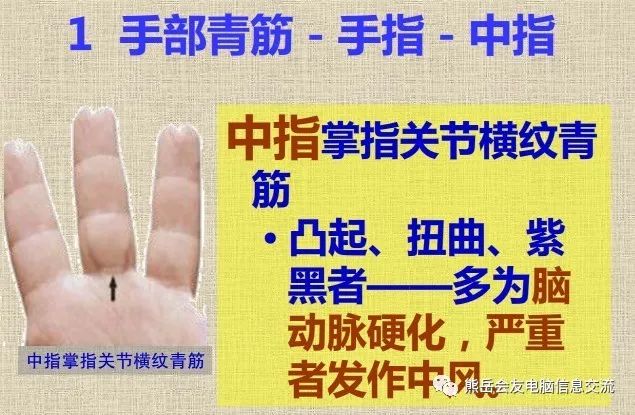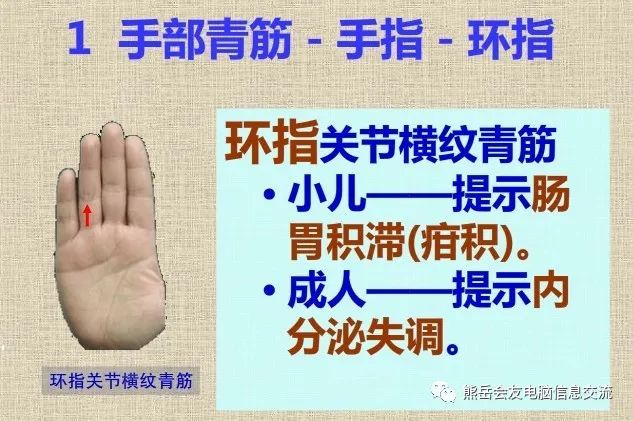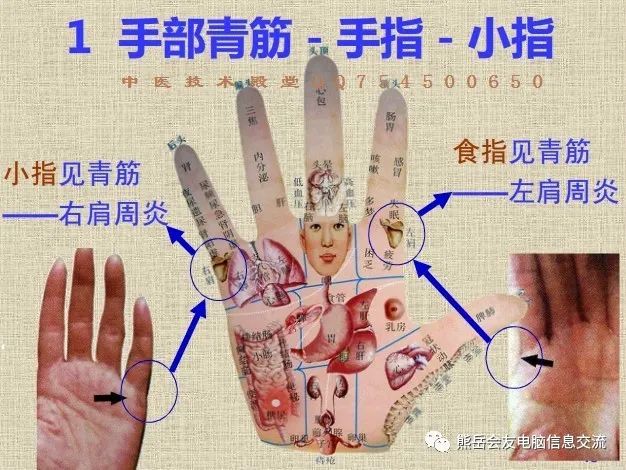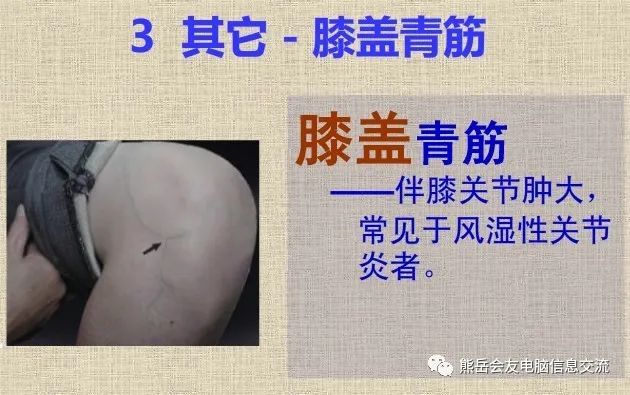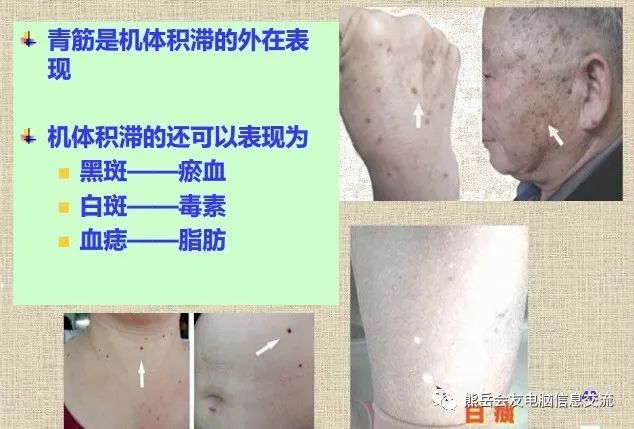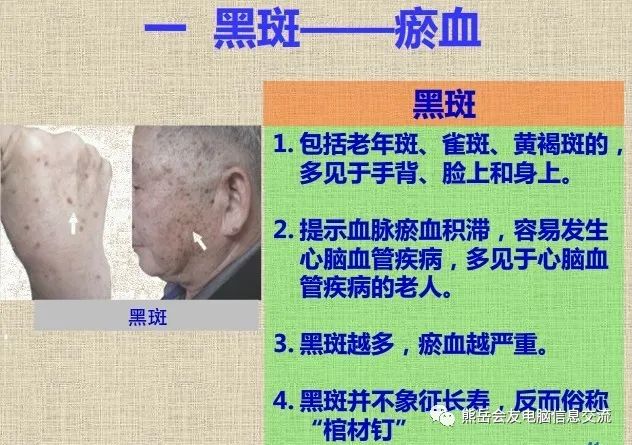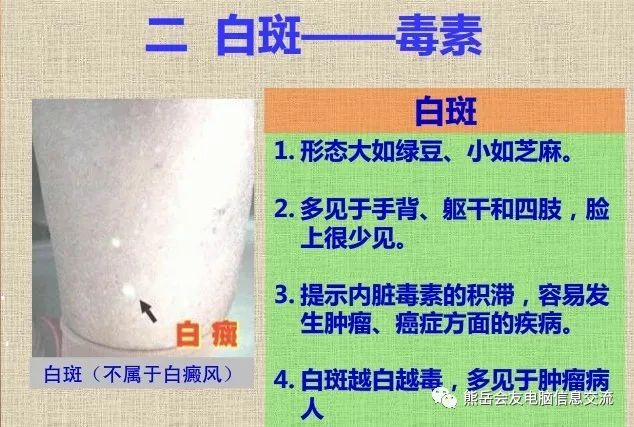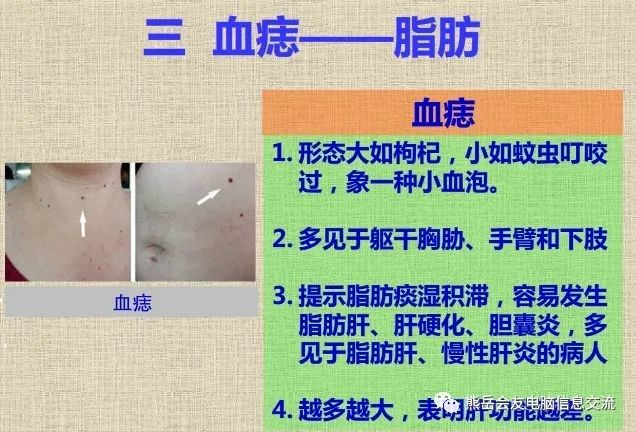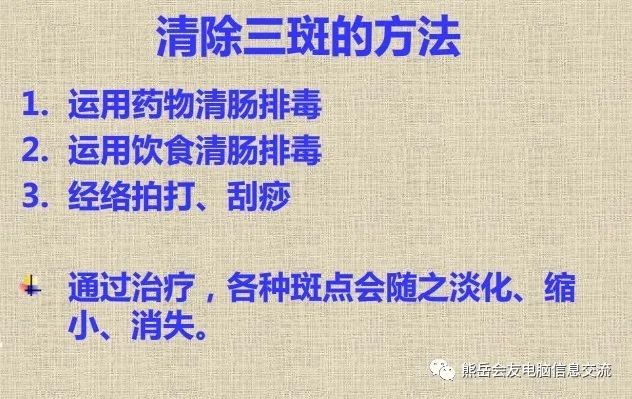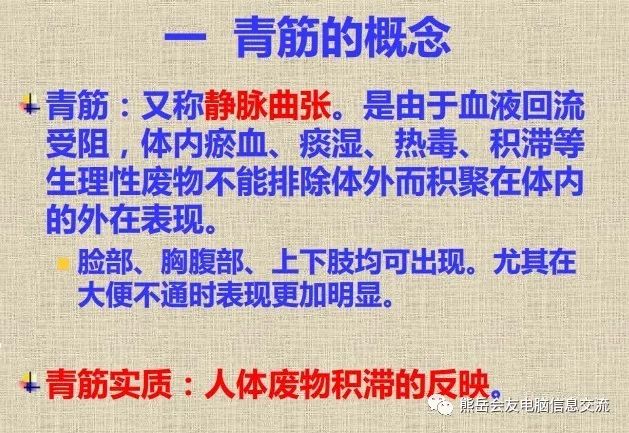
1. The occurrence of tendon diseases: The “Lingshu” (Spiritual Pivot) states that tendon diseases occur due to: 1. Cold causing the tendons to contract; heat causing the tendons to relax and not retract. 2. Resulting from liver diseases. 3. The primary cause is external injury.
2. The formation of tendon diseases (discussing primarily external injuries that cause this condition): Once the tendons are injured, the damaged area becomes thin and torn, commonly referred to as muscle strain. At this point, Qi and blood stagnate, and if the injured tendons do not heal, they will contract and form knots, clinically referred to as tendon knots. The formation of tendon knots marks the beginning of chronic diseases; non-injury related tendon diseases also exhibit similar signs.
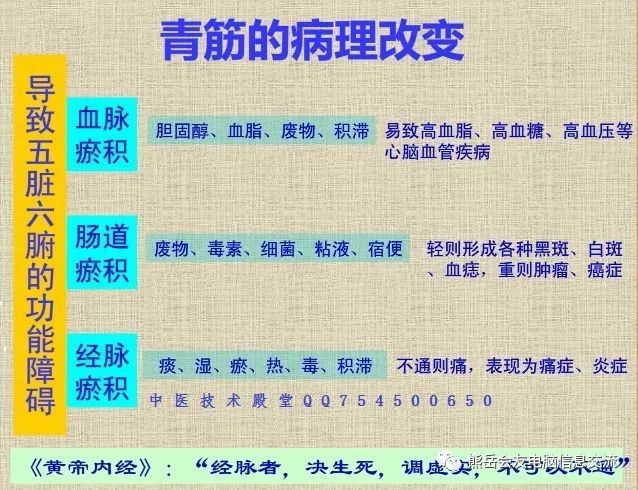
The explanation of tendon knots is as follows: tendon knots are generated from injured tendons, consisting of two layers: the inner layer is the injured part, and the outer layer is the normal fascia. Tendon knots are a product of the body’s self-protection against pain. After tendon injury, it resembles a rope or rubber band that is about to break, unable to bear the required force. For a rope that is about to break, tying a knot at the breaking point allows it to be reused, albeit shortened. For tendons, while we cannot tie them, the formation of tendon knots protects the injured area and accommodates bodily movements. Just as a knotted rope shortens, tendon knots also shorten, and they may enlarge over time. Although a person’s height remains unchanged, the tendons shorten, leading to an internal contraction force. This is why conditions like lower back and leg pain are difficult to treat; the key lies in treating the tendon knots. When untreated, patients do not feel pain.
“Visible veins” refer to the subcutaneous veins that can be seen on the human body. Experts believe that any abnormal bulging of visible veins in any part of the body reflects the accumulation of phlegm, dampness, rashes, toxins, etc. Everyone should learn to observe and understand discomforts to seek medical attention early.
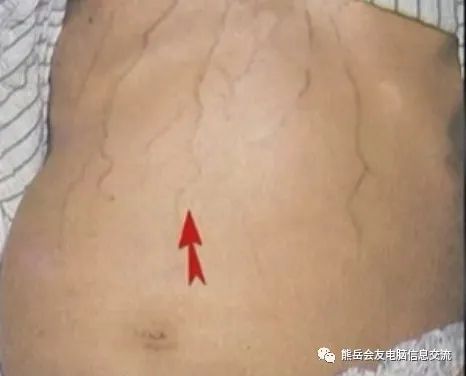
Generally, the visible veins can be primarily observed on the face, head, and feet. Visible veins, also known as venous blood vessels, refer to the vessels that return blood to the heart. When venous blood return is obstructed and pressure increases, visible veins often appear bulging, twisted, and discolored on the surface of the body. Why is blood return obstructed? It is actually due to internal accumulation. Various physiological waste products such as blood stasis, phlegm-dampness, heat toxins, and stagnation cannot be expelled from the body, leading to dysfunction in various systems. At this time, visible veins on the face, abdomen, and especially on the palms and backs of the hands become very prominent. Thus, visible veins indicate internal accumulation.
If there is excessive cholesterol, blood lipids, and stagnation in the blood, it can lead to circulatory disorders, easily causing high blood lipids, high blood sugar, and high blood pressure, which are cardiovascular diseases. If the meridians are obstructed by phlegm, dampness, stasis, heat, toxins, and stagnation, it will exacerbate inflammatory responses, leading to pain and worsening symptoms.
If there are waste products, toxins, bacteria, mucus, and fecal matter accumulating in the gastrointestinal tract, it can lead to toxicity, which can harm the body, resulting in various black spots, white spots, blood moles, and in severe cases, tumors and cancer.
Scientific research has found that cancer and aging are both caused by blood stasis and waste accumulation, making accumulation the source of numerous diseases. Therefore, the “Huangdi Neijing” (Yellow Emperor’s Inner Canon) states: “The meridians determine life and death, regulating deficiency and excess; they must not be obstructed.”
Based on clinical experience, the following symptoms may indicate the presence of accumulation:
(1) Difficulty in bowel movements, with black, sticky stools that take a long time to pass, requiring excessive use of toilet paper.
(2) Poor appetite, dry mouth, thick tongue coating.
(3) Easily fatigued, prone to colds, recurrent colds.
(4) Shortness of breath, fatigue, poor mental state, unclear thinking, insomnia with vivid dreams.
(5) Bruising or spots appearing easily after massage, cupping, tapping, or gua sha.
(6) Prone to skin allergies, skin pigmentation, such as age spots, freckles, melasma, white spots, blood moles, etc.
(7) Feeling cold when eating cold foods, feeling hot when eating hot foods, and being unable to tolerate supplements.
(8) Long-term mental and physical strain, work stress, and depression.
(9) Frequently feeling low-grade fever.
Individuals exhibiting several of the above symptoms are mostly in a sub-healthy state. The more symptoms present, the deeper the level of internal accumulation, indicating a higher likelihood of disease. In severe cases, tumors may develop, leading to serious illness.
Therefore, the appearance of visible veins on the body indicates excessive internal waste accumulation, reflecting the external manifestation of phlegm, dampness, stasis, heat, and toxin accumulation. As the saying goes: “Visible veins over the bridge of the nose indicate trouble ahead.” The more waste accumulates in the body, the more pronounced the visible veins become. Generally, individuals who do not have bowel movements for several days will notice particularly prominent visible veins, and the state of internal accumulation can be observed through the morphology of the visible veins.
Generally, changes in the shape and color of visible veins indicate the severity of internal waste accumulation, leading to toxicity over time. If visible veins become bulging, twisted, and dark purple, it often indicates that the internal waste is highly toxic, and may even signal the onset of serious illness. Therefore, the appearance of visible veins on any part of the body indicates corresponding issues in that area.
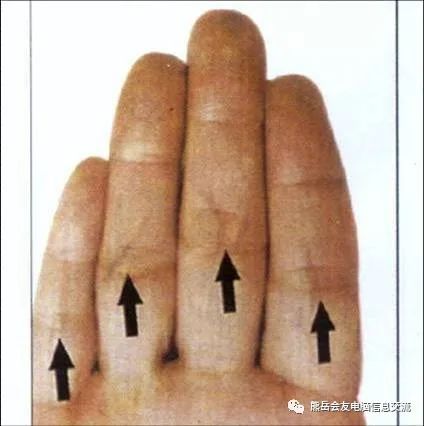
Distribution of visible veins:
(1) Visible veins on the hands
Children with accumulation often show visible veins on the bridge of the nose, but after the age of three, they often appear on the hands. Therefore, the more metabolic waste in adults, the more visible veins on the hands. The appearance of visible veins in a specific area indicates corresponding internal organ accumulation.
1. Visible veins on the back of the hand
Visible veins on the back of the hand indicate accumulation in the lower back, which can lead to lower back strain, fatigue, and common symptoms of lower back pain, even muscle tension and nodules.
2. Visible veins on the fingers
Visible veins on children’s fingers indicate gastrointestinal accumulation and poor digestion. In adults, visible veins on the fingers not only indicate digestive system issues but also reflect microcirculation disorders in the head, insufficient blood supply to the brain, discomfort in the head, and in severe cases, dizziness, headaches, or stroke.
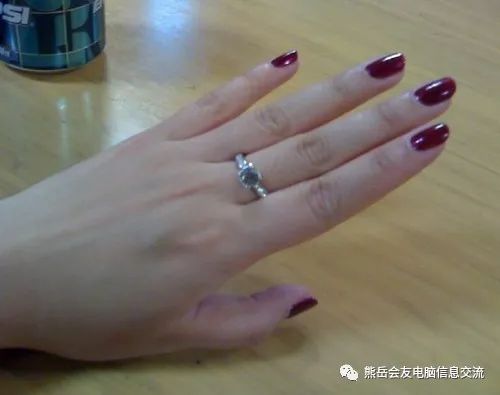
3. Visible veins on the palm
(1) Visible veins on the thenar indicate lower back and leg pain and lower limb rheumatic joint pain.
(2) Visible veins on the wrist crease often indicate gynecological diseases, such as menstrual irregularities and leukorrhea.
(3) Visible veins on the Neiguan point often indicate heart-related diseases, such as myocardial strain, irritability, palpitations, and insomnia with vivid dreams.
(4) The closer the visible veins on the Neiguan point are to the point itself, the earlier heart symptoms may occur; the more bulging, twisted, and dark purple the visible veins are, the more severe the heart disease may be, even indicating a serious heart condition.
(5) Visible veins near the lifeline often indicate liver and gallbladder metabolic issues, leading to symptoms such as bitter mouth, dry mouth, irritability, and chest tightness.
(6) Visible veins at the base of the thumb are often seen in women before and after menstruation, indicating breast tenderness.
(7) Visible veins on the horizontal lines of the index finger indicate a tendency for left shoulder periarthritis. Visible veins on the horizontal lines of the little finger indicate a tendency for right shoulder periarthritis.
(8) Bulging, twisted visible veins on the thumb joint indicate coronary artery sclerosis; dark purple indicates the onset of coronary heart disease.
(9) Bulging, twisted, dark purple visible veins on the middle finger joint indicate cerebral artery sclerosis.
(10) Visible veins on the fingers, even noticeable between the finger joints, indicate gastrointestinal accumulation and habitual constipation or tumors, hemorrhoids, etc. After changing bowel habits, the visible veins will gradually fade and disappear.
(11) Visible veins throughout the palm indicate gastrointestinal accumulation, high blood lipids, high blood viscosity, high blood pressure, high acidity in the blood, low oxygen content, and easy blood coagulation and stagnation, leading to symptoms such as dizziness, headaches, fatigue, and physical weakness.
(12) Visible veins on the shoulders indicate a tendency for shoulder periarthritis, which is particularly difficult to treat.
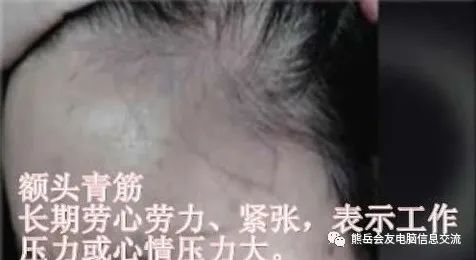
(2) Visible veins on the head
1. When visible veins on the temples bulge, it often indicates dizziness and headaches; when they bulge and twist, it indicates cerebral artery sclerosis; when dark purple, it indicates a higher risk of stroke.
2. Visible veins on the forehead indicate long-term mental and physical strain, tension, work stress, or emotional stress.
3. Visible veins on the bridge of the nose indicate gastrointestinal accumulation, leading to symptoms such as stomach pain, abdominal bloating, poor digestion, and difficulty in bowel movements; when purple, the situation is more severe.
4. Visible veins under the eyes often indicate gynecological diseases, menstrual irregularities, and leukorrhea.
5. Visible veins at the corners of the mouth often indicate gynecological diseases, heavy leukorrhea, fatigue, and lower back pain.
6. Visible veins under the chin correspond to the coronary arteries of the heart, indicating a higher risk of heart disease and myocardial strain. If the visible veins bulge, twist, and appear dark, it indicates a higher risk of coronary heart disease.
(3) Visible veins on the chest and abdomen
1. Visible veins on the chest and abdomen often indicate breast hyperplasia, breast tenderness during menstruation, and emotional depression.
2. Visible veins on the abdomen, as the saying goes, “visible veins over the belly” indicate more serious accumulation; in adults, it may indicate liver cirrhosis, ascites, or late-stage tumors. Visible veins on the abdomen often indicate difficult-to-treat diseases.
(4) Visible veins on the lower limbs
1. Visible veins on the knees indicate swelling of the knee joints and rheumatic arthritis.
2. Visible veins on the calves, especially in severe cases of varicose veins, often lead to lower back and leg diseases, and rheumatic joint pain. This is particularly common among teachers who stand for long periods, farmers who walk a lot, or individuals who enjoy hot showers. Cold can penetrate the bones and injure the tendons, which is a common issue in daily life that can lead to chronic diseases, even making it difficult to lower high blood pressure.
In summary, the appearance of visible veins anywhere on the body not only affects aesthetic appearance but more importantly reflects the accumulation of waste in the body. The key to eliminating visible veins is to learn to detoxify the intestines. Detoxifying the intestines is different from simply having regular bowel movements; many people mistakenly believe that having daily bowel movements is sufficient, neglecting the need for detoxification. This is akin to regularly cleaning toilets, descaling kettles, or removing carbon buildup from cars in daily life. Detoxifying the intestines and eliminating the prominence of visible veins is best achieved through regular tapping and gua sha therapy.
Bulging visible veins on the temples indicate signs of cerebral artery sclerosis, headaches, and stroke;
Visible veins on the forehead may indicate hyperthyroidism or diabetes;
Bulging visible veins on the bridge of the nose indicate gastrointestinal accumulation and poor digestion;
Visible veins on the jaw indicate rheumatism or lower limb diseases;
Black visible veins on the back of the fingers indicate cervical spondylosis or lumbar disease;
Bulging visible veins at the finger joints indicate poor gastrointestinal function, abdominal pain, and bad breath;
Bulging or twisted visible veins at the thumb joint indicate coronary artery sclerosis and myocardial strain.
Observing visible veins to understand diseases should also be based on individual circumstances; some men naturally have larger blood vessels; some individuals engaged in heavy physical labor may have more prominent veins than average; some people may notice their veins bulging to varying degrees after drinking alcohol or exercising. Therefore, it is unnecessary to panic upon seeing bulging visible veins; rather, one should pay attention to the condition of visible veins in various parts of their body regularly, and if any changes from the norm are observed, it is advisable to take extra care.
